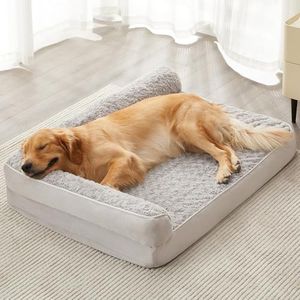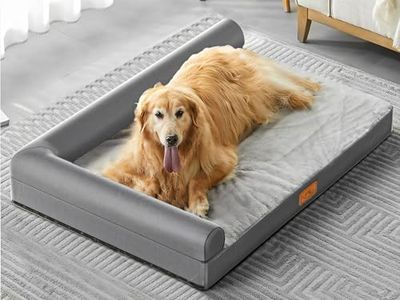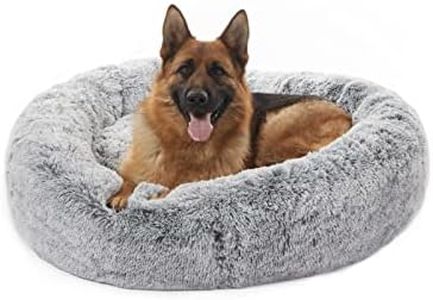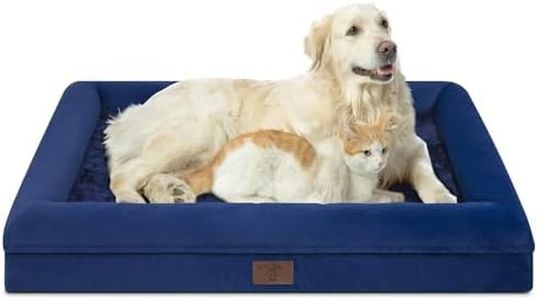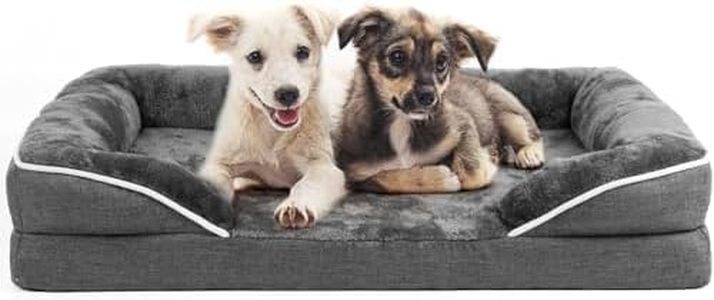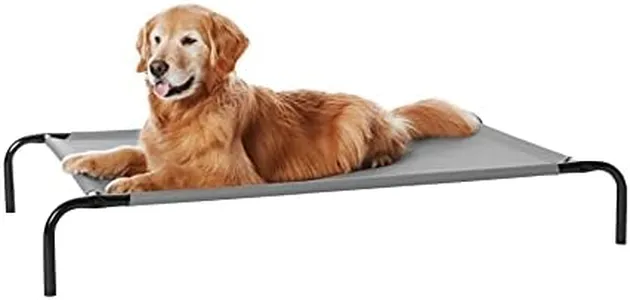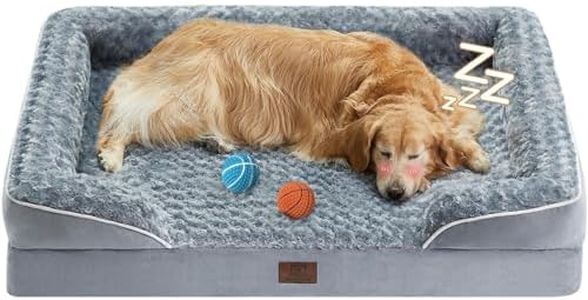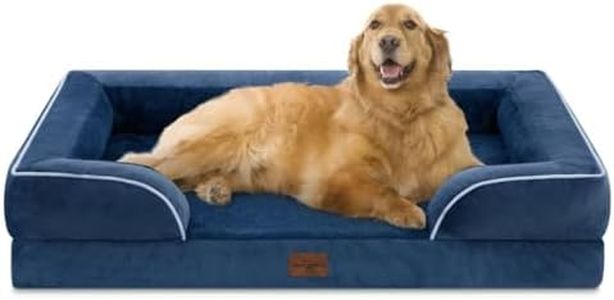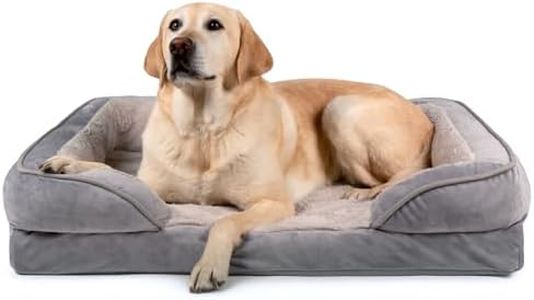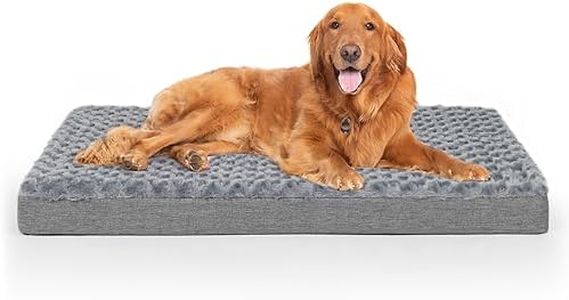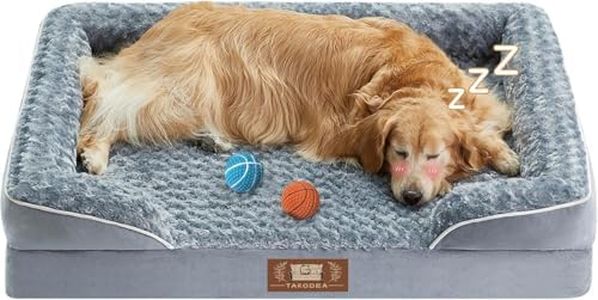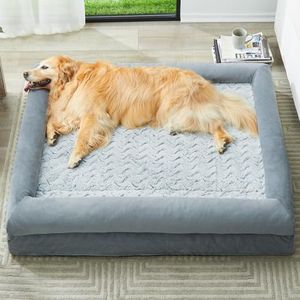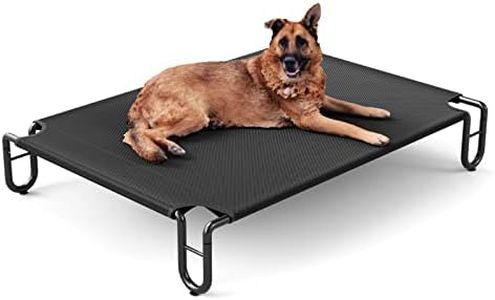We Use CookiesWe use cookies to enhance the security, performance,
functionality and for analytical and promotional activities. By continuing to browse this site you
are agreeing to our privacy policy
10 Best Large Dog Beds
From leading brands and best sellers available on the web.Buying Guide for the Best Large Dog Beds
Choosing the right large dog bed is essential for your pet’s comfort, health, and happiness. A good bed provides a dedicated space for your dog to rest, supports joints, and helps keep your home cleaner by collecting fur in one place. The ideal bed will keep your dog snug, support their sleeping style, and be durable enough for daily use. Your choice should be guided by your dog's size, age, health needs, and habits.SizeThe size of a dog bed refers to its length and width, ensuring your large dog can stretch out comfortably without hanging off the edges. Size is crucial because a bed that’s too small can cause discomfort or discourage your dog from using it, while an oversized bed might take up unnecessary space in your home. Beds typically come in ranges such as 'large,' 'extra-large,' and even 'giant.' To choose the right size, measure your dog from nose to tail while they are stretched out and add several inches for extra space. Pick a bed that will accommodate your dog’s full length and weight comfortably.
Support and Filling MaterialSupport and filling material refers to what’s inside the dog bed. It determines how soft or firm it feels and how well it supports your dog's joints and muscles. For large dogs, strong support is important to prevent joint pain or arthritis, especially for older pets. Bed fillings range from basic polyester stuffing (soft but less durable), to memory foam (great support, ideal for senior or arthritic dogs), to orthopedic foams. If your dog is young and healthy, a standard foam or fiber filling may suffice. For heavier dogs or seniors, opt for thick memory foam or orthopedic designs that distribute weight evenly and prevent sagging.
Cover MaterialThe cover material is the fabric on the outside of the dog bed. It affects how comfortable the bed feels, how well it resists dirt and moisture, and how easy it is to clean. Common choices include cotton, fleece, microfiber, suede, and waterproof synthetics. For most pet owners, look for removable, machine-washable covers for easy cleaning. If your dog sheds a lot or is prone to accidents, consider a durable, water-resistant, or waterproof material.
Shape and DesignShape and design refer to the overall layout of the bed, such as rectangular, oval, round, or bolstered (beds with raised edges). Dogs that like to sprawl usually prefer flat or mattress-style beds, while dogs that curl up may enjoy round beds or ones with raised sides for a feeling of security. Observe your dog’s sleeping style before selecting the shape—they’ll feel most at home with a bed that matches their favorite resting position.
Ease of CleaningEase of cleaning matters because dog beds collect fur, dirt, and odors over time. Beds with removable covers or those that are fully machine-washable make regular cleaning simpler. Some covers are also resistant to staining or waterproof, which can be helpful if your dog gets dirty easily or is prone to accidents. Choose a bed that aligns with the amount of cleaning you are willing to do, especially if your dog spends a lot of time outdoors or sheds heavily.
Durability and Chew ResistanceDurability refers to how well the bed withstands daily use, especially if your dog likes to scratch, dig, or chew. Some beds are made with reinforced or tear-resistant fabrics for dogs that are rough on their bedding. If your dog has a habit of chewing or scratching, prioritize beds marketed as 'chew-proof' or with extra-strong stitching. If your dog is gentle, durability is less critical but still worth considering so the bed lasts longer.
